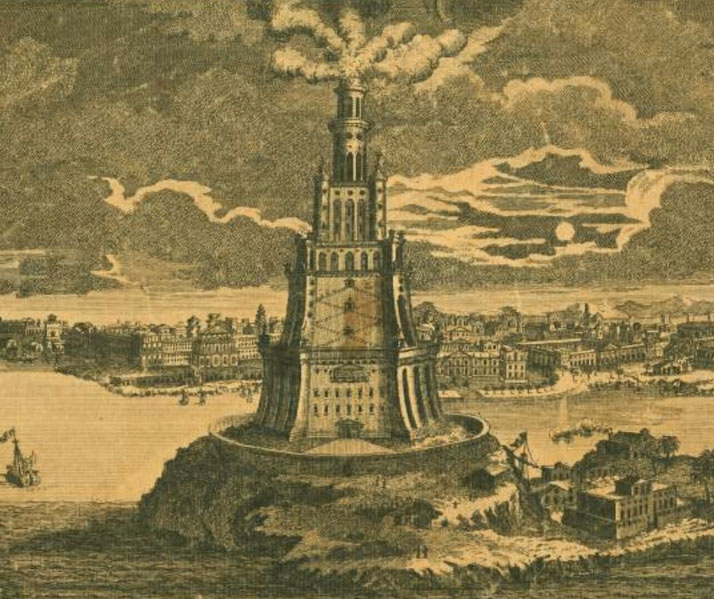The Lighthouse of Alexandria: an ancient engineering marvel

For centuries, the Lighthouse of Alexandria was one of the most remarkable structures in the world. Located on the coast of Alexandria, Egypt, it stood as a beacon of hope for sailors and a symbol of power for the Ptolemaic dynasty.
Its construction was a marvel of ancient technology, and it stood as a testament to the ingenuity and skill of the architects and engineers who designed it.
What was the Lighthouse of Alexandria?
The Lighthouse of Alexandria, also known as the Pharos of Alexandria, was one of the Seven Wonders of the Ancient World.
Located on the coast of Alexandria, Egypt, the lighthouse was built during the reign of Ptolemy II Philadelphus in the 3rd century BC.
It was considered one of the tallest man-made structures of the ancient world, standing at a height of approximately 120-137 meters (393-449 feet) tall.
The Lighthouse of Alexandria was built on the island of Pharos, which was connected to the mainland by a causeway.
The island had been a strategic location for the city of Alexandria, which was founded by Alexander the Great in 332 BC.
Its construction
Construction of the Lighthouse of Alexandria was an engineering marvel for its time. It was designed by the architect Sostratus of Cnidus, who envisioned a tower that would serve as a navigational aid for ships in the Mediterranean Sea.
The lighthouse was constructed of large blocks of light-colored stone, with a spiral staircase inside leading to the top.
A fire was lit at the top of the tower each night.
The lighthouse was intended to serve as a landmark for ships traveling to and from the city, as well as a warning signal for approaching enemy fleets.
The construction of the Lighthouse of Alexandria took approximately 12 years to complete.
It is believed that the tower was built in three sections, with the lowest section being the largest and the uppermost section the smallest.
The exterior of the tower was covered in marble, and the interior was lined with lead to protect against the elements.
An engineering marvel
Over the centuries, the Lighthouse of Alexandria played a significant role in the history of the Mediterranean.
It was a symbol of the power and wealth of the Ptolemaic dynasty, and it served as a beacon for sailors from all over the ancient world.
The Lighthouse of Alexandria was an important navigational aid for sailors traveling in the Mediterranean Sea.
Its light could be seen from up to 50 kilometers (30 miles) away, and it served as a landmark for ships traveling to and from the city of Alexandria.
It was also a warning signal for approaching enemy fleets, making it an important strategic location for the city.
Also, the Lighthouse of Alexandria was also an important scientific site, with astronomers using it to study the stars and planets.
It was believed to have been equipped with a mirror that reflected sunlight during the day, and its location on the island of Pharos made it an ideal location for observing the night sky.

Its destruction
The Lighthouse of Alexandria was damaged by several earthquakes over the centuries, and it was eventually destroyed completely by a series of earthquakes in the 14th century.
Today, only a few ruins remain of the once-great tower. However, the lighthouse remains a symbol of human ingenuity and engineering prowess, and it continues to inspire awe and fascination among people all over the world.
What do you need help with?
Download ready-to-use digital learning resources
Copyright © History Skills 2014-2025.
Contact via email
With the exception of links to external sites, some historical sources and extracts from specific publications, all content on this website is copyrighted by History Skills. This content may not be copied, republished or redistributed without written permission from the website creator. Please use the Contact page to obtain relevant permission.





